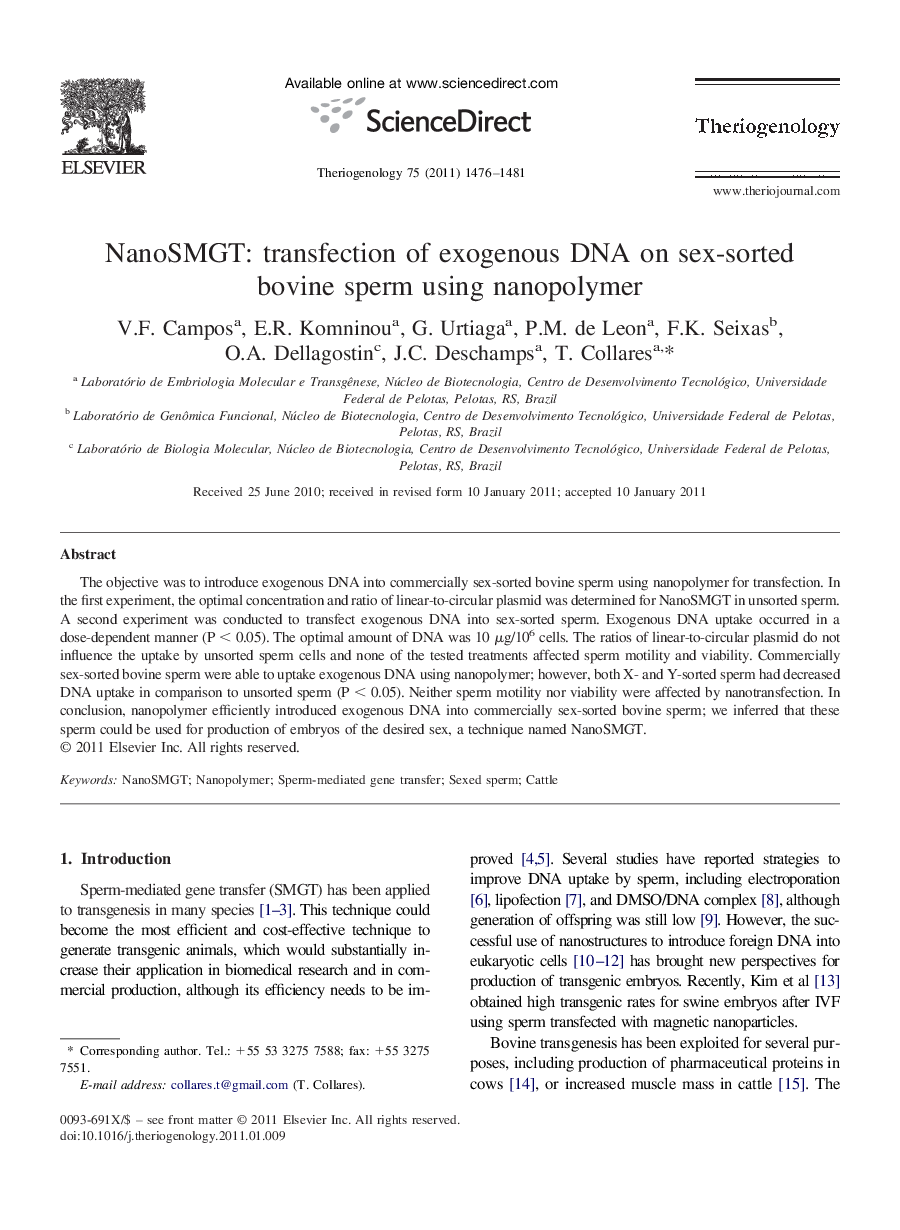| Article ID | Journal | Published Year | Pages | File Type |
|---|---|---|---|---|
| 2097763 | Theriogenology | 2011 | 6 Pages |
The objective was to introduce exogenous DNA into commercially sex-sorted bovine sperm using nanopolymer for transfection. In the first experiment, the optimal concentration and ratio of linear-to-circular plasmid was determined for NanoSMGT in unsorted sperm. A second experiment was conducted to transfect exogenous DNA into sex-sorted sperm. Exogenous DNA uptake occurred in a dose-dependent manner (P < 0.05). The optimal amount of DNA was 10 μg/106 cells. The ratios of linear-to-circular plasmid do not influence the uptake by unsorted sperm cells and none of the tested treatments affected sperm motility and viability. Commercially sex-sorted bovine sperm were able to uptake exogenous DNA using nanopolymer; however, both X- and Y-sorted sperm had decreased DNA uptake in comparison to unsorted sperm (P < 0.05). Neither sperm motility nor viability were affected by nanotransfection. In conclusion, nanopolymer efficiently introduced exogenous DNA into commercially sex-sorted bovine sperm; we inferred that these sperm could be used for production of embryos of the desired sex, a technique named NanoSMGT.
